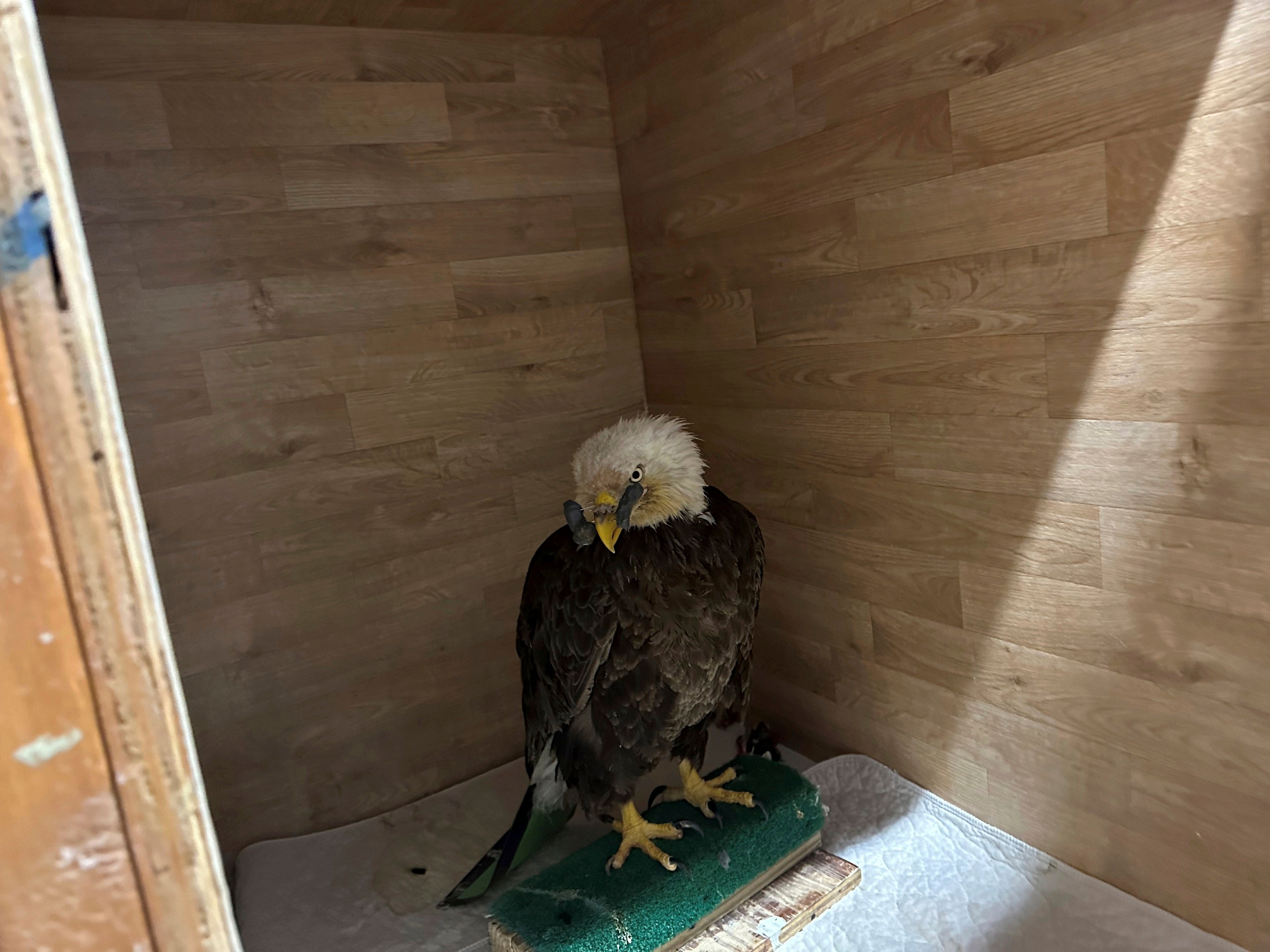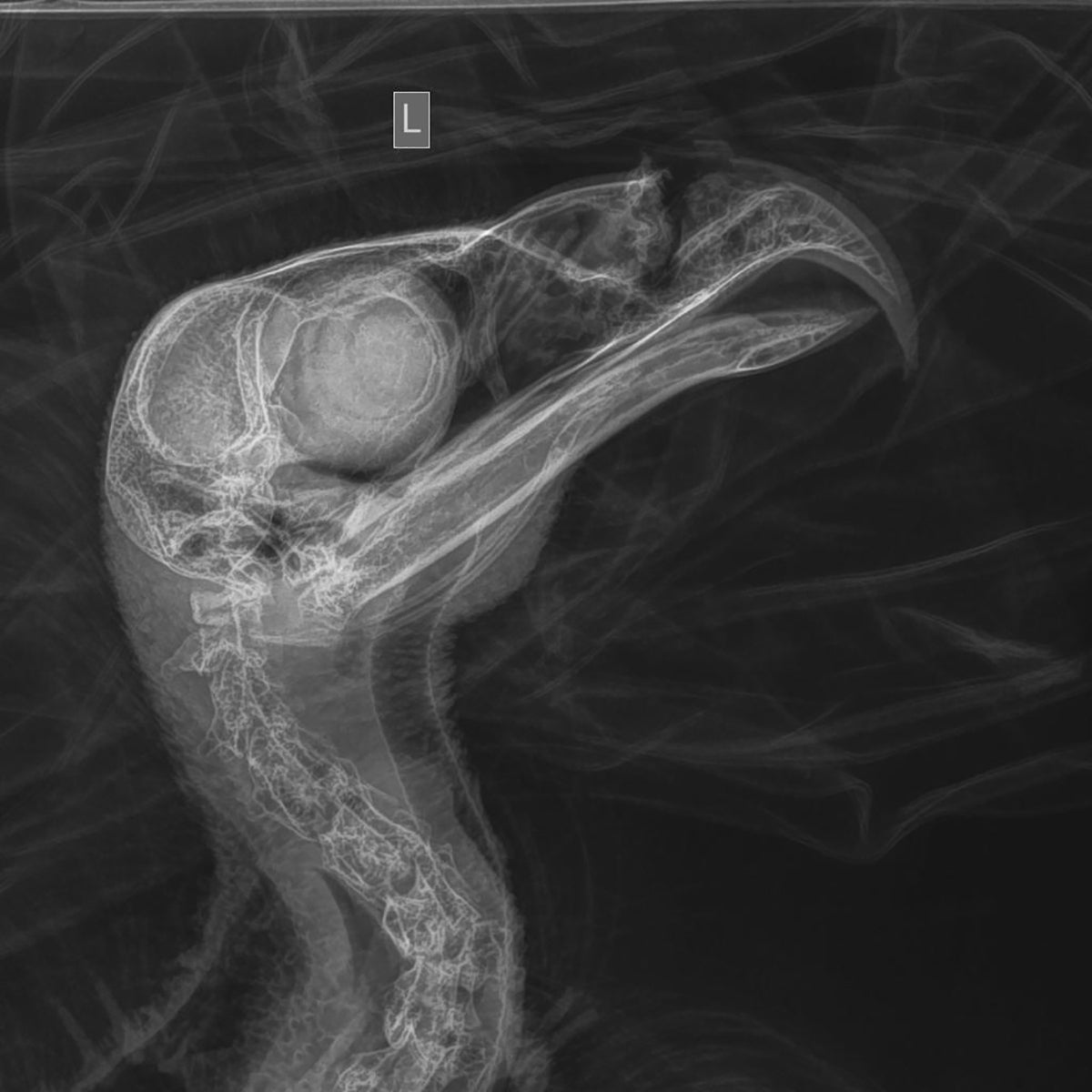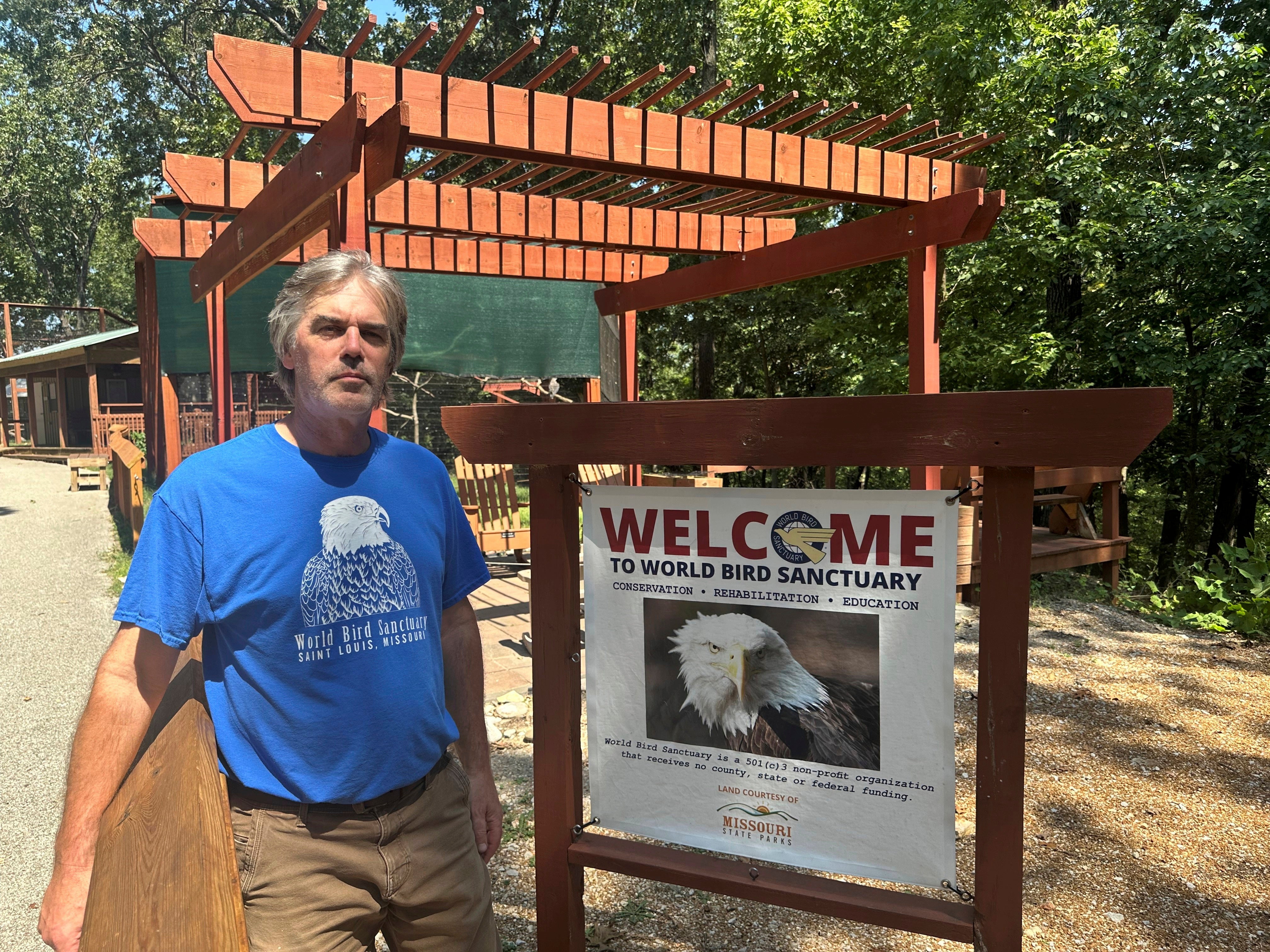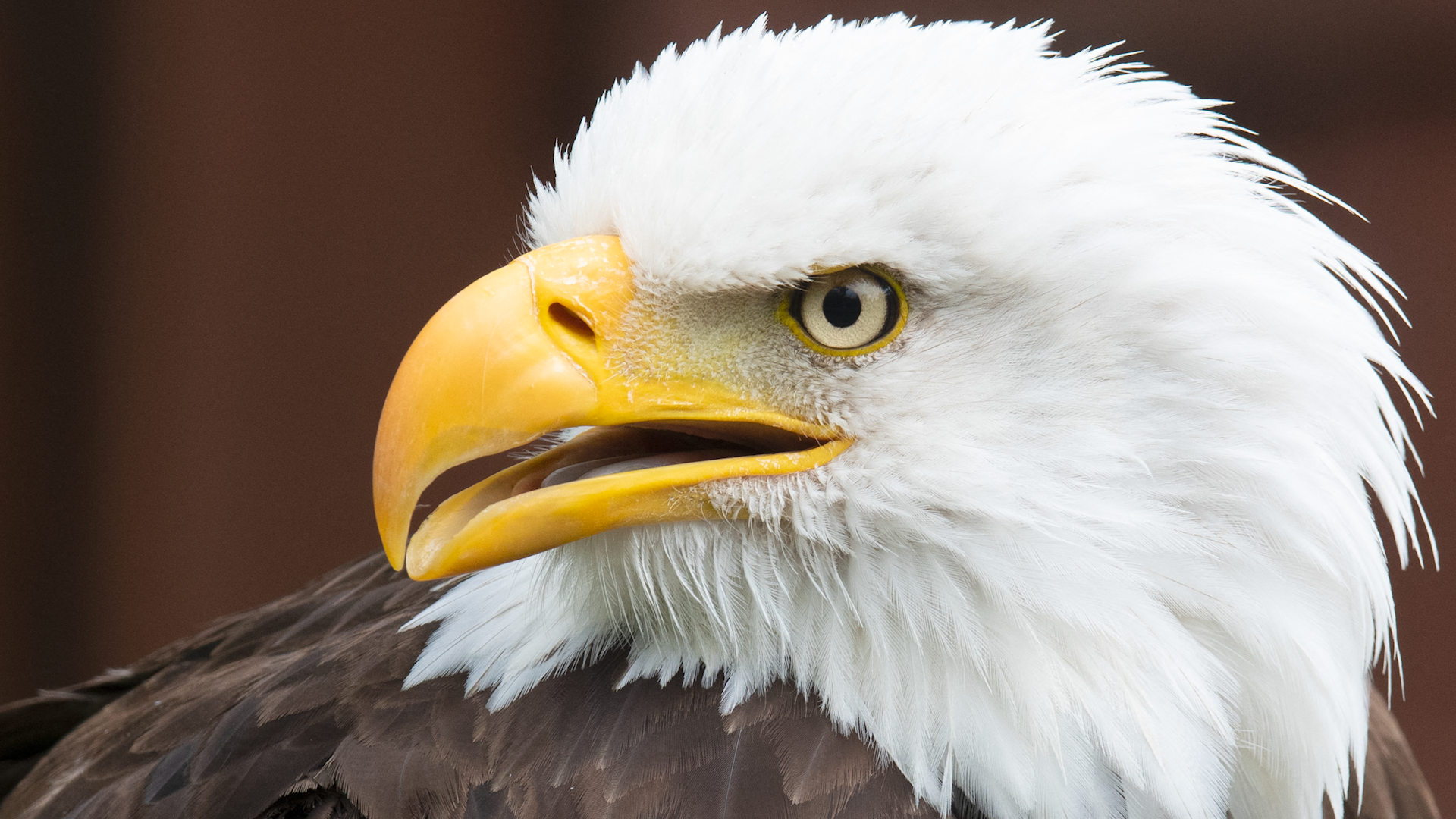A bald eagle was shot in the beak – but a care team in Missouri is hopeful it can be saved
A bald eagle is slowly recovering from surgeries after it was shot in Missouri

Your support helps us to tell the story
From reproductive rights to climate change to Big Tech, The Independent is on the ground when the story is developing. Whether it's investigating the financials of Elon Musk's pro-Trump PAC or producing our latest documentary, 'The A Word', which shines a light on the American women fighting for reproductive rights, we know how important it is to parse out the facts from the messaging.
At such a critical moment in US history, we need reporters on the ground. Your donation allows us to keep sending journalists to speak to both sides of the story.
The Independent is trusted by Americans across the entire political spectrum. And unlike many other quality news outlets, we choose not to lock Americans out of our reporting and analysis with paywalls. We believe quality journalism should be available to everyone, paid for by those who can afford it.
Your support makes all the difference.A bald eagle is slowly recovering after surgeries in Missouri, the victim of a shooting that experts say is far too common for America's national bird and other raptors.
The male eagle was found injured in central Missouri on July 11. A volunteer with the World Bird Sanctuary picked it up and brought the 7-pound (3.2-kilogram) adult back to the sanctuary in suburban St Louis.
Roger Holloway, the sanctuary's executive director, said the eagle's upper beak was nearly split in half by the bullet. It also had an injured left wing and suffered from lead poisoning.
The eagle, designated No 24-390 because it is the 390th injured bird treated at the sanctuary this year, has undergone three surgeries. Holloway said an operation last week was to further repair the severely damaged beak — a serious injury that would be life-ending if it doesn't heal.
The good news: Suture sites from earlier surgeries are healing well, and so are jaw fractures caused by the force of the bullet, Holloway said. Another procedure is likely in early September.
But even if all goes well, No 24-390 will require months of care, perhaps even a year, before he could conceivably be released back into the wild.

“We’re just being cautiously optimistic that he’s otherwise healthy and has gained weight, is processing food well, and he’s getting feistier and less cooperative, which we really like,” Holloway said. “Because the bird is wild and it's got strength, and that’s what it needs to have the ability grow the beak back to its functional size and length.”
No 24-390 is among six raptors treated for gunshot wounds this summer at the World Bird Sanctuary. About 600 birds are treated there each year, most of them hurt in various types of collisions.
Holloway and other experts say they're seeing an increase in shooting injuries to the majestic birds, which have served as the national symbol of the United States for nearly two-and-a-half centuries. Both bald and golden eagles also are widely considered sacred by Native Americans.

US law prohibits anyone without a permit from killing, wounding or disturbing eagles, or taking their nests or eggs. Even taking feathers found in the wild can be a crime.
In the late 1800s, America was home to around 100,000 nesting bald eagles. Habitat destruction and hunting nearly made the birds extinct, prompting Congress to pass the Bald Eagle Protection Act in 1940 that made it illegal to possess, kill or sell bald eagles.
Pesticides continued to kill bald eagles, and by 1960 only about 400 breeding pairs remained. The bald eagle was put on the endangered species list in 1978.
Federal protections and regulation of pesticides containing DDT prompted a comeback. In 1995 the bald eagle's status was changed from endangered to threatened, and it was removed from the threatened list in 2007.
Eighteen years ago, Missouri had 123 confirmed bald eagle nests, said Janet Haslerig, avian ecologist for the Missouri Department of Conservation. Today, there are 609.
But as the population has grown nationwide, so have the number of shootings.
“It’s trending up and very disturbing,” Haslerig said.
In March, a Washington state man accused of helping kill thousands of birds pleaded guilty in federal court to shooting eagles on a Native American reservation in Montana and selling their feathers and body parts on the black market.

Many other shootings are due to a combination of “ignorance and boredom,” Holloway said.
“Sometimes, it’s just like, ‘I have a gun. There’s a target,’” he said. "They don’t understand the laws and rules. They don’t understand they’re committing a felony.
“This is just indiscriminate shooting from irresponsible individuals.”